Although perhaps more suitable for kids, “and they all lived happily ever after” is a pretty cheesy and boring conclusion to a story. As it turns out, many classic fairy tales that have been made into kids films featured some not-so-happy conclusions and are very dark and twisted. The dark origins of many of these films are shocking and tackle some alarming subject matter, but after being “Disneyfied” they are now sweet, sugar-coated stories where good triumphs evil. Prepare to be alarmed, as today we are lifting the lid on classic fairy tale films that have sinister origins.
10. The Princess and the Frog (2009)
The story of The Princess and the Frog has been known for a long time, but it was only in 2009 that Disney created an animated film. In the Disney film, Tiana kisses a prince who has been turned into a frog and consequently becomes a frog herself. In the end, she becomes a princess and they are returned to human form after sharing a kiss. The Brothers Grimm story which it is based on, The Frog Prince, is not quite so sweet. This sees a spoiled princess encounter a frog, who tells her that he needs her help breaking a spell so that he can return to being a handsome prince. Instead of puckering up, the princess brutally throws the poor Frog Prince against the wall in disgust, which breaks the spell. In some versions, the frog’s skin is burned or his head is chopped off.
 Source: Screenshot via Walt Disney Pictures
Source: Screenshot via Walt Disney Pictures9. The Lion King (1994)
The Lion King is perhaps the most popular Disney film, and this is because it has an amazing story. It is about the circle of life, and this includes the tragic death of Simba’s father, Mufasa. The film is also known to be heavily influenced by Shakespeare’s Hamlet, and the comparisons are easy to make with Simba as Prince Hamlet, Scar as King Claudius, and Mufasa as the recently deceased King Hamlet. The play sees Prince Hamlet discover Claudius is responsible for his father’s death, and he plots to get revenge. Claudius fears for his life and plots to kill Prince Hamlet, as well as try to convince him that he is responsible for his father’s death. This culminates in Prince Hamlet being stabbed by a poisoned blade, but before dying, he stabs his uncle and forces him to drink poisoned wine. This sees the entire royal family die, so hardly a story about the circle of life.
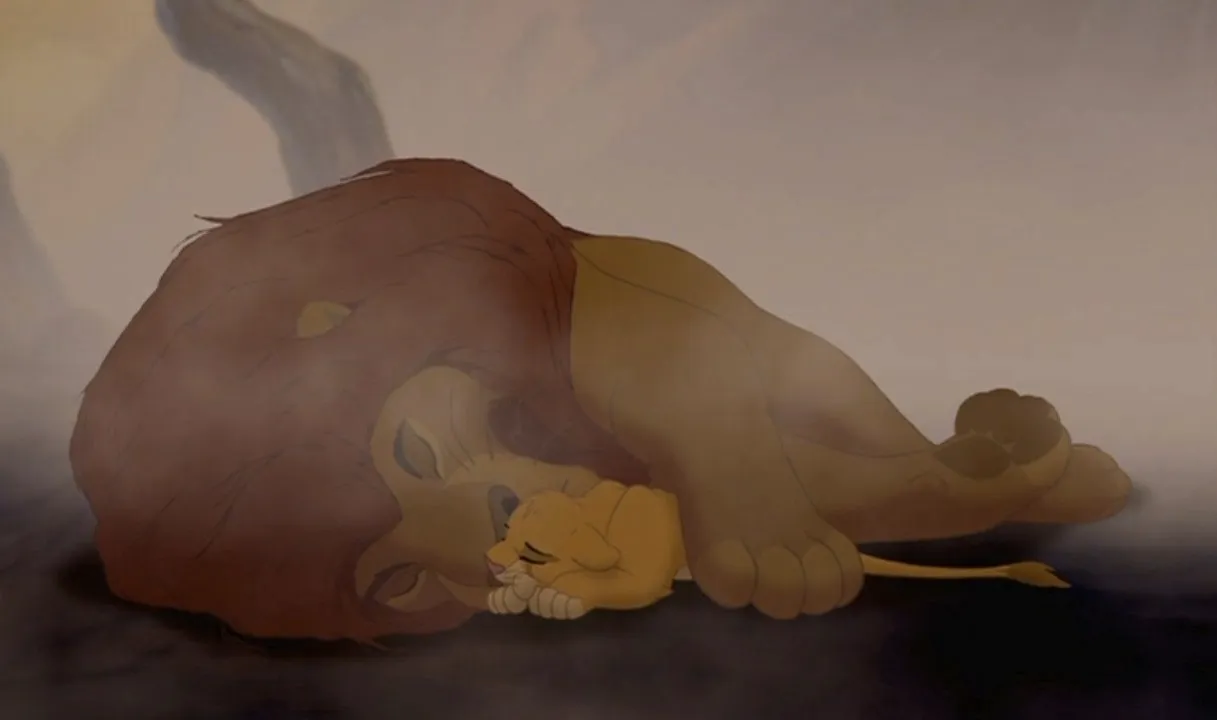 Source: Screenshot via Walt Disney Pictures
Source: Screenshot via Walt Disney Pictures8. The Hunchback of Notre Dame (1996)
Whilst Disney’s version of The Hunchback of Notre Dame may not have the happiest possible ending, it is still positive with Quasimodo leaving the cathedral and being accepted by society (despite his love interest falling for Phoebus). Victor Hugo’s original tale, published in 1831, has not even a sniff of positivity and instead is both very sad and dark. It sees Frollo, the Archdeacon, frame Esmeralda for an attack on Phoebus and she is sentenced to death by hanging. Quasimodo attempts to rescue her, but Frollo hands her over to the troops after another attempt to win her love. He laughs during her hanging, seeing Quasimodo push Frollo from the heights of Notre Dame. Quasimodo then lies with her corpse until he dies of starvation, and their skeletons are found 18 months later and crumble to dust when someone tries to separate them. Quite the tragic tale.
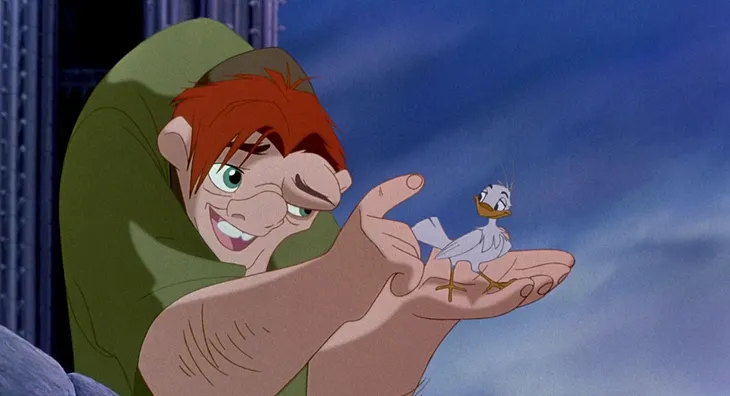 Source: Screenshot via Walt Disney Pictures
Source: Screenshot via Walt Disney Pictures7. Snow White and the Seven Dwarfs (1937)
Those that are unfamiliar with The Brothers Grimm are missing out, as they are the masters of creepy folk tales that were used as morality stories for children. Many of these have been popularized and made less, well, grim, and this includes Snow White and the Seven Dwarfs. Both versions follow a similar storyline, but the original is a lot more sinister and not so child-friendly. Under orders to murder Snow White, the huntsman finds himself unable to do so and brings the Evil Queen the liver and lungs of a boar as false proof. After discovering she is alive, the queen disguises herself and attempts to kill her by suffocation, brushing her hair with a poisoned comb and feeding her a poisoned apple (which appears to do the trick). In the end, the Evil Queen is forced to dance in glowing-hot iron shoes until she drops dead.
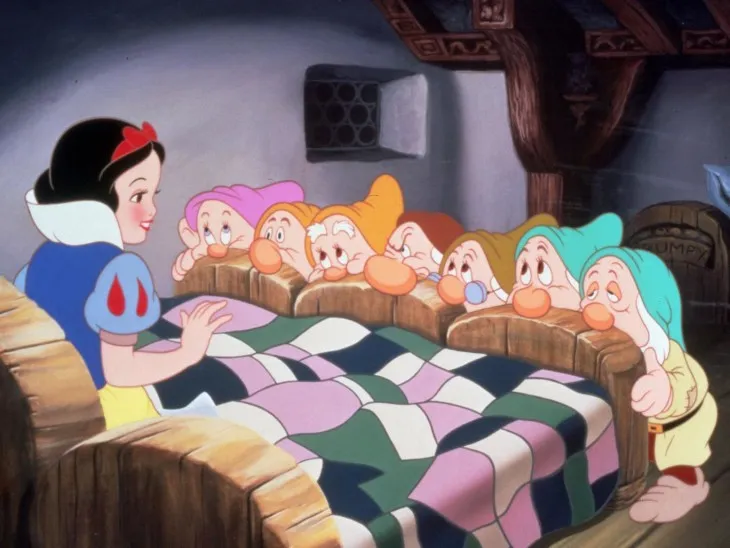 Source: Screenshot via Walt Disney Productions
Source: Screenshot via Walt Disney Productions6. Aladdin and the King of Thieves (1996)
The second direct-to-video sequel to Aladdin, 1996’s Aladdin and the King of Thieves is inspired by Ali Baba and the Forty Thieves, which appeared in the Arabian Nights collection of folk tales. The key character is Cassim, who is Aladdin’s long-lost father in the film and his brother in the original. In the original story, a greedy Cassim enters the treasure cave but forgets the words to get out, causing him to be found by the thieves and dismembered, with pieces of his body put on display at the entrance. Ali Baba (Aladdin) then gets a slave girl to sew the body back together so it appears a natural death to avoid suspicion. The thieves seek him out for revenge, but they are outsmarted by the slave girl who gets two of them killed by the leader before she kills 37 by pouring boiling oil on them. She murders the leader sometime later.
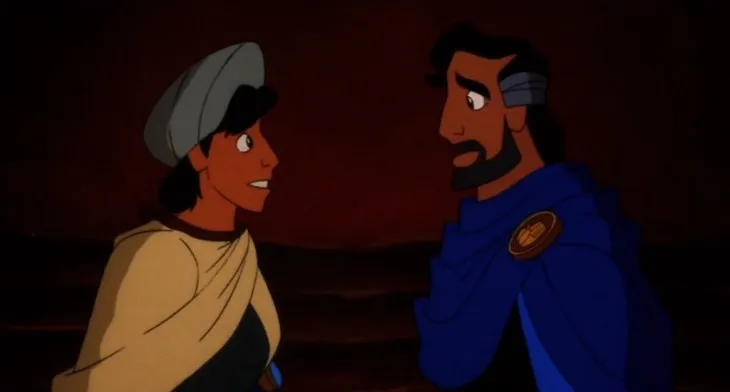 Source: Screenshot via Walt Disney Home Video
Source: Screenshot via Walt Disney Home Video5. Cinderella (1950)
Cinderella is one of the more famous fairy tales and one that has had a huge impact on popular culture. The Brothers Grimm version is much more gruesome than the much-loved and child-friendly Disney version, which does not offer any sort of punishment for Cinderella’s wicked stepsisters. In The Brothers Grimm version, titled Aschenputtel, the stepsisters are so desperate to fit into the golden slipper that they cut off their toes and heels to fit into it. Two doves from Heaven inform the prince of this after he has been fooled by each stepsister, and he finally ends up with Aschenputtel and they marry. At the wedding, the stepsisters are bridesmaids but have their eyes pecked out by the doves from Heaven as punishment for their treatment of Aschenputtel. It is hard to see Disney including that in their sugar-coated version.
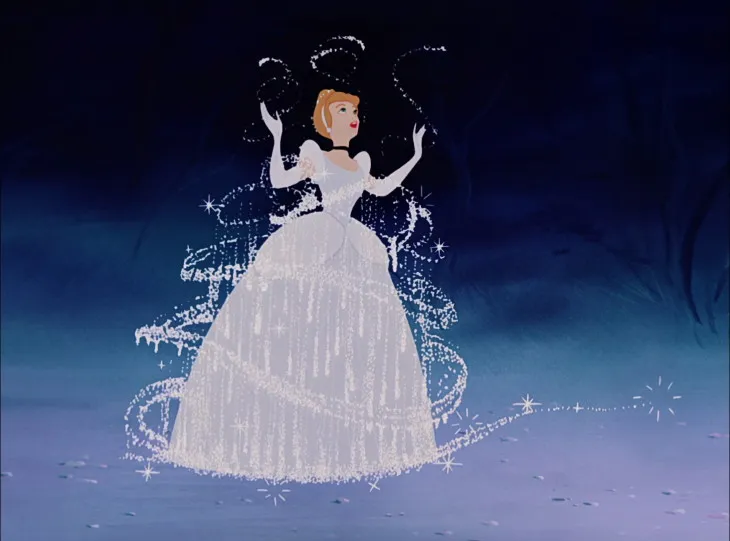 Source: Screenshot via Walt Disney Productions
Source: Screenshot via Walt Disney Productions4. Hercules (1997)
If Disney made Hercules true to the myth, it would certainly not be a children’s tale. In Greek mythology, Zeus tricked Heracles’ mother, Alcmene, into having sex with him and the birth of Heracles was, therefore, evidence of Zeus’s unfaithfulness. This is why Hera, wife of Zeus, hated Heracles. Heracles grows up and marries a king’s daughter and has two children by her, but in a fit of madness induced by Hera, Heracles slays his children. He went on to marry a few more times, but was unfaithful and had several male lovers. After more murder, sex, and generally x-rated behavior, Heracles finally met a grisly end. A centaur told Heracles’ wife, Deianira, that to prevent him from being unfaithful she needed to make a potion made out of semen and spilled blood (actually poison). Later, she puts this on a tunic which sees Heracles’ flesh rip off, exposing his bones.
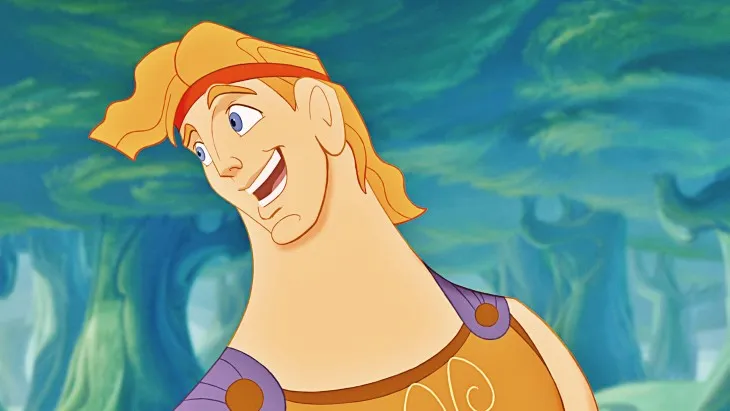 Source: Screenshot via Walt Disney Pictures
Source: Screenshot via Walt Disney Pictures3. The Little Mermaid (1989)
Disney’s version of The Little Mermaid is a fun and colorful film with classic characters such as Flounder and Sebastian the Jamaican crab. The film concludes in typical fashion, with Ariel being transformed from a mermaid to a human where she then marries Prince Eric. The original story, written by Danish author Hans Christian Anderson and published in 1837, is very dark and features a conclusion which is not so fitting for kids. Ariel does fall for a prince in this version after saving him, but he falls in love with another princess. Ariel takes human form in exchange for her voice but then is heartbroken to find out that he will be marrying the princess. She is given the chance to become a mermaid again by slaying the prince, but she is unable to do this and throws herself in the ocean to become the foam of the sea.
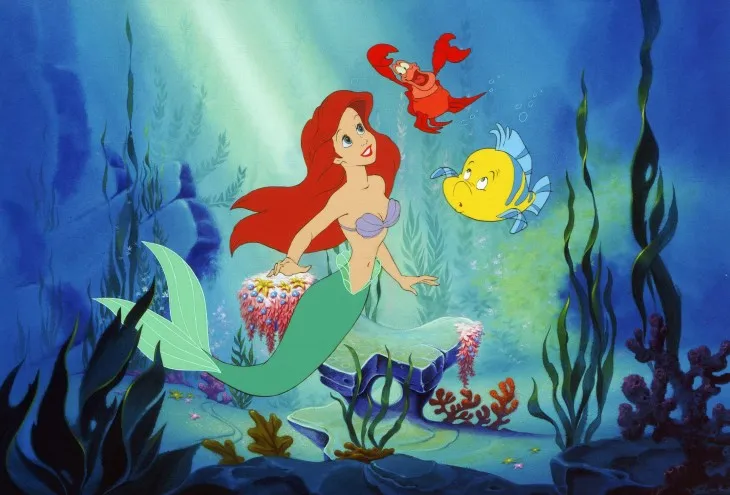 Source: Screenshot via Walt Disney Pictures
Source: Screenshot via Walt Disney Pictures2. The Fox and the Hound (1981)
The Fox and the Hound is a sweet story of two supposed “natural enemies” who become best of friends, right? Wrong. The original novel, written by Daniel P. Mannix, is a particularly bleak and depressing story. It sees Tod, the fox, who enjoys tormenting chained up dogs that include Chief, the leader of the pack. He breaks his chain and chases Tod, but this sees him killed by a train. The master trains his old favorite, Copper, to track Tod for revenge. Over the years, all of Tod’s children and partners are brutally killed. On one relentless hunt, Tod drops dead from exhaustion and Copper also collapses. The master nurses Copper back to health, but he then begins drinking and agrees to move into a nursing home (where dogs are not allowed). He gets his shotgun and takes Copper outside, where the story ends as he covers his dog’s eyes.
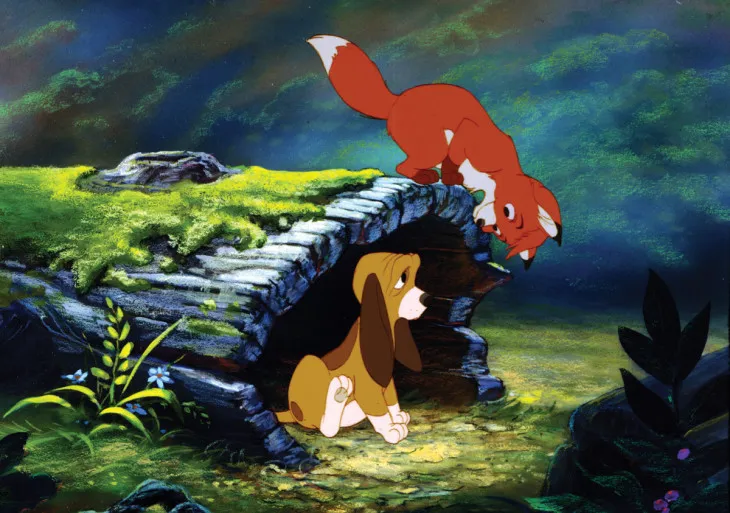 Source: Screenshot via Walt Disney Pictures
Source: Screenshot via Walt Disney Pictures1. Sleeping Beauty (1959)
Disney’s 1959 classic Sleeping Beauty is based on Charles Perrault’s The Sleeping Beauty, which itself was based on Italian poet Giambattista Basile’s Sun, Moon and Talia. This is an incredibly dark and disturbing story, and certainly not one suitable for children. His narrative sees Talia (the sleeping beauty) in a coma because of a splinter, and one day a king walks by the house. He pops in and being unable to wake her, he decides to have non-consensual sex with her as she sleeps. Talia, still sleeping, eventually gives birth to twins and one of these removes the splinter by sucking on her finger. Quite a shock for Talia, but it does not end here. The king decides to pop back in one day and ends up bonding with Talia. The queen gets word of this and attempts to kill and cook the babies so that she can feed her husband his illegitimate children. Certainly not bedtime story material.
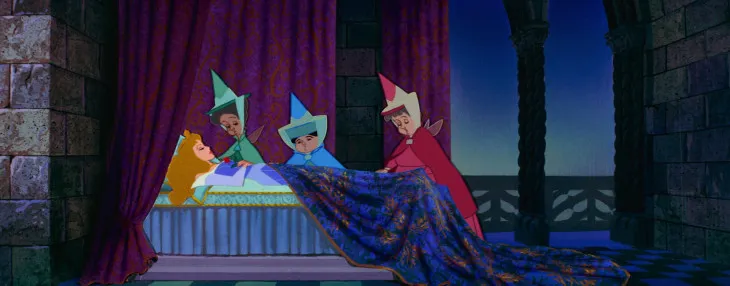 Source: Screenshot via Walt Disney Pictures
Source: Screenshot via Walt Disney Pictures